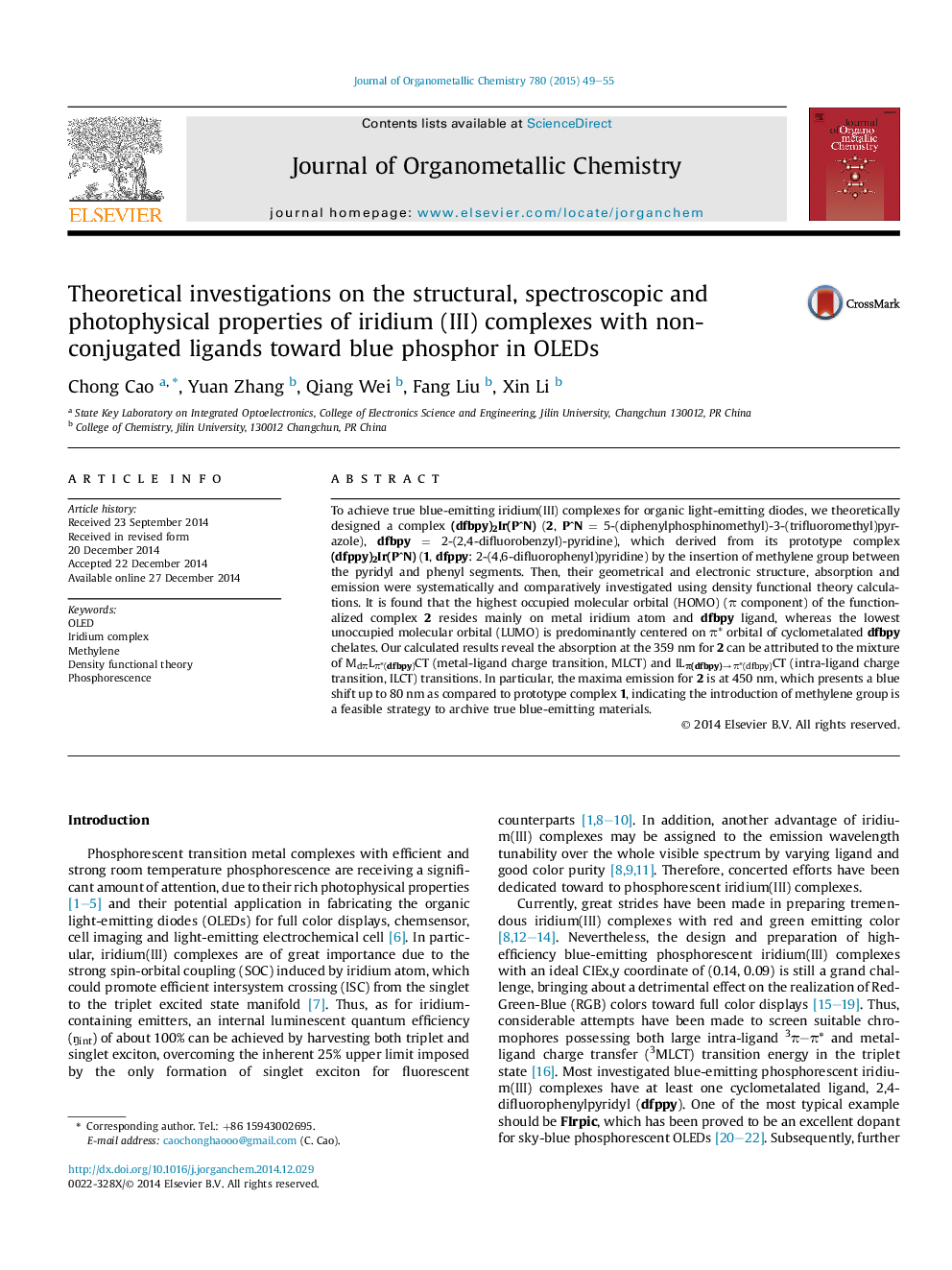| Article ID | Journal | Published Year | Pages | File Type |
|---|---|---|---|---|
| 1325229 | Journal of Organometallic Chemistry | 2015 | 7 Pages |
•A true-blue phosphor (dfbpy)2Ir(PˆN) (2) with non-conjugated ligand was designed.•The non-conjugation of ligand leads to the localization of FMOs distribution.•The HOMO–LUMO energy gap of 2 is larger than that of its prototype (dfppy)2Ir(PˆN) (1).•The calculated maximum emission wavelength for 2 is at 450 nm with blue shift by 80 nm versus prototype 1.
To achieve true blue-emitting iridium(III) complexes for organic light-emitting diodes, we theoretically designed a complex (dfbpy)2Ir(PˆN) (2, PˆN = 5-(diphenylphosphinomethyl)-3-(trifluoromethyl)pyrazole), dfbpy = 2-(2,4-difluorobenzyl)-pyridine), which derived from its prototype complex (dfppy)2Ir(PˆN) (1, dfppy: 2-(4,6-difluorophenyl)pyridine) by the insertion of methylene group between the pyridyl and phenyl segments. Then, their geometrical and electronic structure, absorption and emission were systematically and comparatively investigated using density functional theory calculations. It is found that the highest occupied molecular orbital (HOMO) (π component) of the functionalized complex 2 resides mainly on metal iridium atom and dfbpy ligand, whereas the lowest unoccupied molecular orbital (LUMO) is predominantly centered on π* orbital of cyclometalated dfbpy chelates. Our calculated results reveal the absorption at the 359 nm for 2 can be attributed to the mixture of MdπLπ*(dfbpy)CT (metal-ligand charge transition, MLCT) and ILπ(dfbpy)→π*(dfbpy)CT (intra-ligand charge transition, ILCT) transitions. In particular, the maxima emission for 2 is at 450 nm, which presents a blue shift up to 80 nm as compared to prototype complex 1, indicating the introduction of methylene group is a feasible strategy to archive true blue-emitting materials.
Graphical abstractAn iridium(III) complex (dfbpy)2Ir(PˆN) derived from (dfppy)2Ir(PˆN) by the insertion of methylene group, shows its maximum emission at 450 nm and could be used as promising true blue-emitting material for OLEDs.Figure optionsDownload full-size imageDownload as PowerPoint slide
